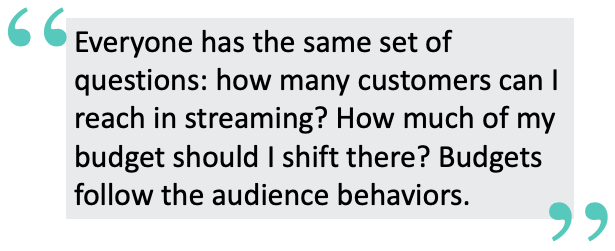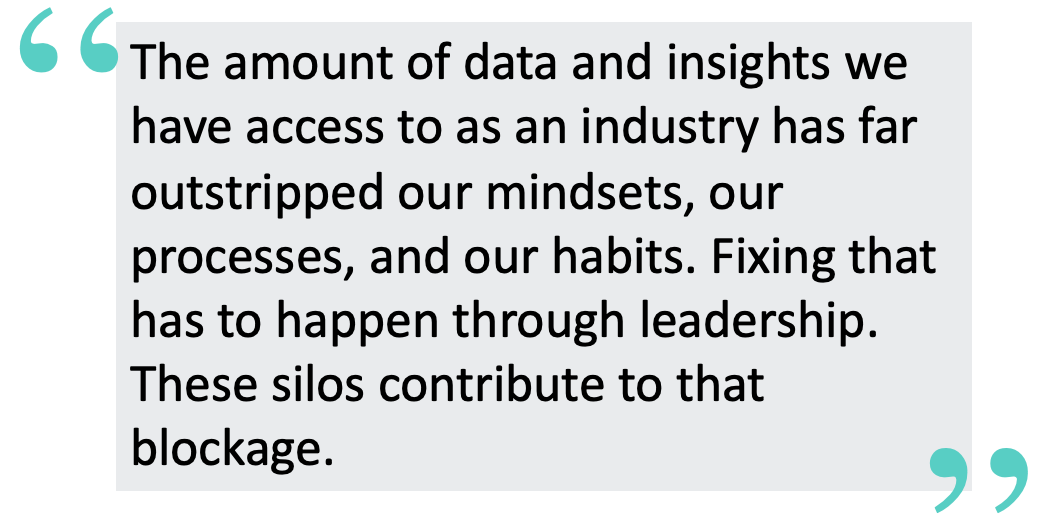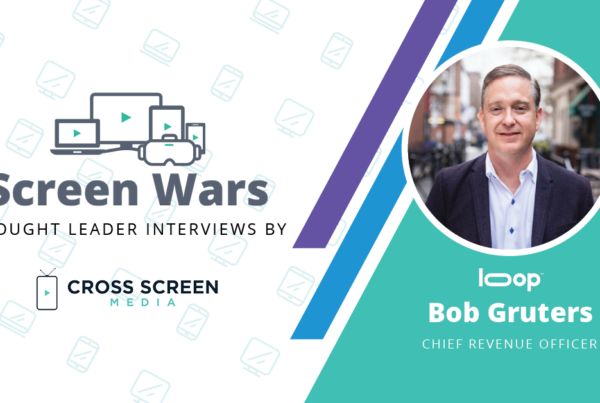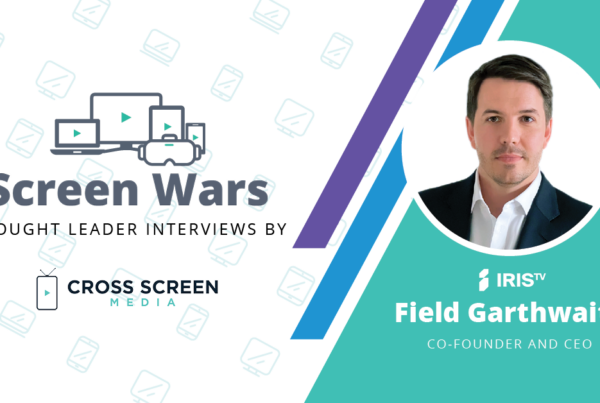Justin Evans, Global Head of Analytics & Insights at Samsung Ads, joins Cross Screen Media CEO Michael Beach to share his insights on the rapid growth of streaming and the opportunities it presents for advertisers and networks, in our latest Screen Wars Thought Leader Interview.
Michael Beach: What was your first job and what lessons did you take from it that you have applied in your career?
Justin Evans: My first job in data was in corporate strategy at Nielsen leading different growth projects. One time when faced with a politically thorny project, an executive took me aside and said, “When I hear people complaining about you, I’ll know you’re pushing hard enough.” That counsel helped me realize that there’s this uncomfortable space at the fringe of a company or industry’s comfort zone where the change and growth happen. You can’t have growth without going there. I’ve tried to occupy that space ever since.
MB: What is the biggest change you have seen in the video ad marketplace since you started working at Samsung Ads?
JE: It was only a year or so ago that we saw that streaming time was about 40% of total TV time spent. We set a mental timer for how fast streaming would reach parity with linear. Knowing how slow TV behaviors can change, we expected it would take a few years. Boy, did we underestimate the pace of adoption—the numbers have whizzed past like road signs on a superhighway. We hit parity just a few months later in Q3 2019—50/50 linear and streaming time spent. Then streaming hit 52% in Q4 2019, then 57% in Q1 2020 due to COVID-19 stay-at-home orders. Then in Q2 2020, we saw an eye-popping 63%. We are living through a change as significant to the media landscape as the adoption of the smartphone.
MB: How have you and the company adapted to this change?
JE: We’re fortunate to have an audience that is in-demand: 45 million US households, with larger daily reach than any cable network or MVPD. As well as streaming inventory that is in demand: Samsung TV Plus, our free streaming TV service which offers 145 channels ranging from CBSNews to Tastemade to Stadium; and the Samsung Content Network offers inventory across dozens of apps within our SmartHub.
So, on one level, we are running as fast as we can to keep up with demand from advertisers who have embraced this change. And on another level, we are being asked by clients to help them understand and manage this change. Between March and July of this year, we hosted 30+ discussions with over 600 agency professionals in the US, Canada, and Europe. And everyone has the same set of questions: how many customers can I reach in streaming? How much of my budget should I shift there? Budgets follow the audience behaviors.
MB: Which developments are you most excited about within the Convergent TV space?
JE: Ad-Supported Video on Demand (AVOD). We’re seeing it explode. Time spent with AVOD boomed in 2020, growing 130% from Q2 2019 to 2020. Sixty-one percent of our users now watch AVOD. And when they watch, they watch 1 hour and 15 minutes per day.
Twenty-five percent of our users only stream now. That’s a lot of customers to lose touch with if you’re a brand trying to make a sales target. The fact that these audiences are accessible through streaming is a powerful development. A few years ago, as you remember, buyers knew that streaming was happening, but they were wobbly about whether it really represented a reach opportunity. It does.
MB: Digital video ad spending is poised to surpass linear TV ad spending. Within linear TV, targeted ads beyond age and gender are rapidly gaining share. How should the different players in the industry capitalize on these shifts?
JE: Connected TV is simple when it comes to targeting: It’s all targeted. It can be used to reach age/gender targets, or purchase based behavior… but it all can be delivered on a 1:1 basis.
I worry a little bit about the advertisers who rely mainly on addressable linear TV for their TV targeting. Simply because you will absolutely miss 25% of the TV watching audience that isn’t on linear—a lot of your target is simply not going to show up.
We see this in the attribution analysis we perform for clients. The lift from linear TV is strong, generally double digits, and probably more than any digital native would want to give it credit for. But the return on targeted CTV ads can be positively heroic—we see 74% lift on average. These are audiences that are not being reached. When they are finally reached, they respond.
MB: Many organizations have split their digital video and linear TV ad planning into two separate teams. In recent years, some organizations have moved to a more centralized model. Where do you think organizations should be headed in structuring their media planning and buying teams?
JE: I think this is a fascinating issue. On the one hand both teams (digital and traditional) are trying to achieve the same goal: achieving reach and response from the target audience. On the other, both teams, separately, have deep experience. Traditional teams in the ways of TV buying and panel-based measurement; digital teams in targeting and attribution. The easy answer is, the teams and their respective strengths should be combined.
The more difficult answer is that the amount of data and insights we have access to as an industry has far outstripped our mindsets, our processes, and our habits. Fixing that has to happen through leadership. These silos contribute to that blockage. 
MB: Last question; if you could have your whole team read one book right now, what book would you recommend?
JE: The Omnivore’s Dilemma by Michael Pollan. Fifteen years old and still as relevant as ever. Nothing to do with advertising; everything to do with how business decisions can affect the world.
See the rest of the Screen Wars Thought Leader Interview series here!
Justin Evans is Global Head of Analytics & Insights for Samsung Ads. Justin’s team helps clients on three continents understand the emerging TV ecosystem and achieve better performance across linear TV, OTT, digital and mobile. Justin is a leader in cross-screen video and TV innovation: prior to Samsung he was Vice President of Data Strategy at Comcast Spotlight (Effectv), where helped lead the transformation of that $2.5 billion local TV business to an audience and attribution focus, leading analytics, product management and ad sales research. In addition, Justin headed data at venture-backed Collective, serving as EVP Enterprise and Chief Strategy Officer, where he introduced the use of TV STB data into digital; and was SVP of Advertising Solutions at The Nielsen Company where he coined Nielsen’s “Reach Resonance Reaction” framework for ad affectiveness. Justin received a Master of Business Administration degree in Finance from NYU Stern and a Bachelor of Arts degree in English from Columbia University.
Cross Screen Media is a marketing analytics and software company empowering marketers to plan, activate, and measure Connected TV and audience-driven Linear TV advertising at the local level. Our closed-loop solutions help brands, agencies, and networks succeed in the Convergent TV space. For more information, visit CrossScreenMedia.com.




